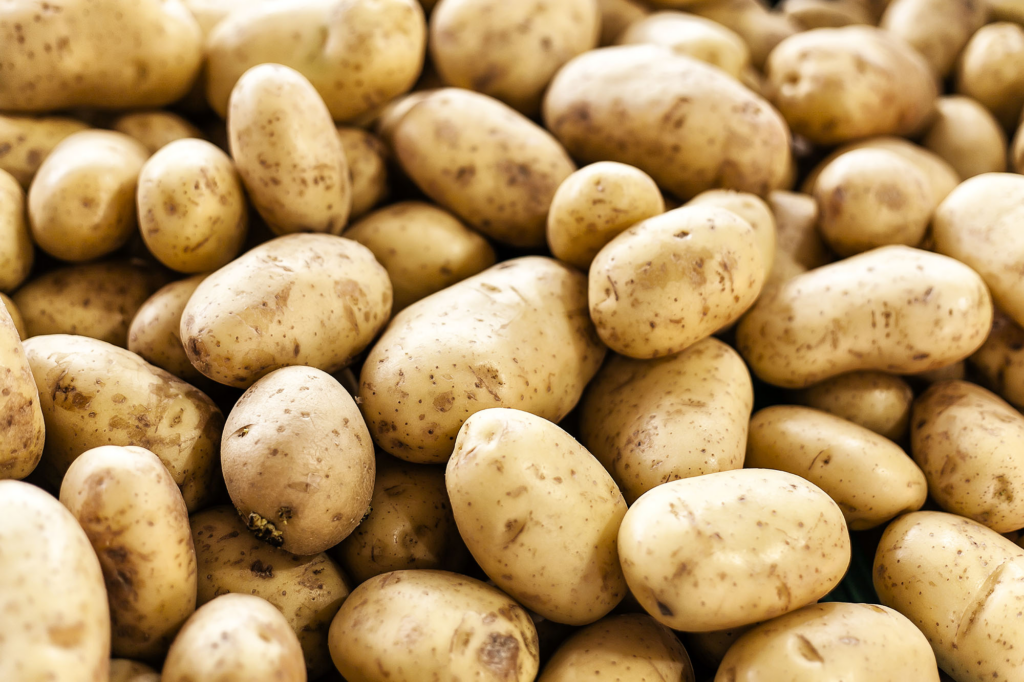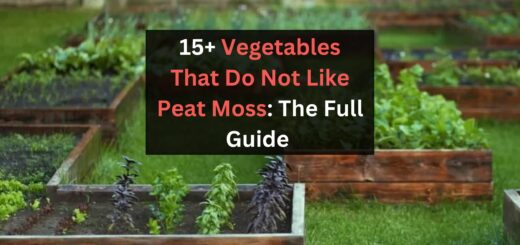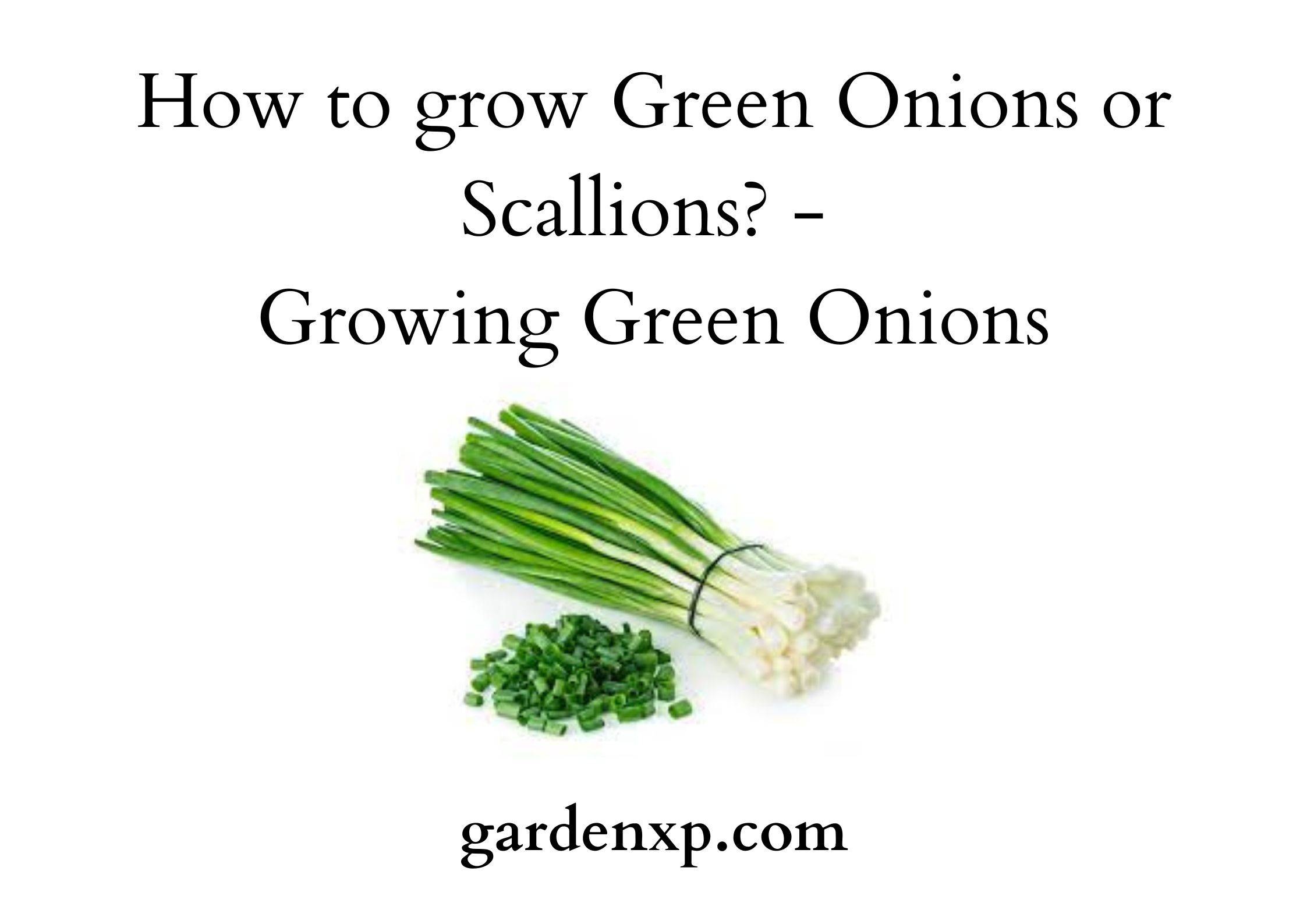Are Potatoes Man Made: The Ultimate History of Potato Plant
Potatoes are often called the “king” of all vegetables. They blend with any other vegetable with ease and only increase the value of a meal. They are undoubtedly one of the most favored vegetables across the world. Hey folks! I am Anna Scott, a Gardener with 15 years of gardening experience, I am here to help you out.
Whether it is fries, chips, or a meal, potatoes are almost present everywhere. This also calls for a wider production of potato crops and hence, are one of the most commercial crops in the entire world.
Grown on the other side of the soil, quite differently from other crops, many often raise the question: Are Potatoes Man Made like spinach? Well, to know the answer to this question, you need to keep scrolling and find out! So, let’s move forward.

Answer to the Ultimate Question: Are Potatoes Man Made?
The potatoes we eat today are a result of a series of human actions though they originally existed in the Andes.
Originating from wild species in South America, potatoes are a product of human creativity working with nature through domestication, selective breeding, and genetic alteration.
The potatoes today are proof of the mutually beneficial relationship between the environment and agricultural methods.
Origin and History of Potato
Between 8,000 and 5,000 BC, people first developed potatoes in the Andes of South America. In Peru, potatoes were first cultivated by the Incas between 8,000 and 5,000 BC. In the Andean hills that separate Peru and Bolivia, the potato gradually changed into its modern form.
Around 6000 BC, the first known trace of potatoes was discovered in the Peruvian Andes. According to research, hunting tribes arrived in South America about 7,000 years before wild potato plants were harvested.
After being introduced to Europe in the middle of the fifteenth century, potatoes eventually made their way back to the Americas and beyond.
Early in the 17th century, Portuguese sailors introduced it to India, and the British later expanded its cultivation to North India. Potatoes are currently one of the principal commercial crops farmed in the nation. In 23 Indian states, it is grown.

Types of Potato
1. Red gold
Red gold potatoes, an early-maturing species, provide a distinctive treat when we slice them. One possible explanation for the name of these red-skinned potatoes is their bright golden flesh, which is visible when they are cut.
This potato cultivar is also thought to have been named after the Red River. This potato’s very thin skin, which tolerates roasting, steaming, and even frying well, is one of its distinguishing characteristics.
These all-purpose potatoes are also great for mashing and baking; for potato lovers, the contrast in color between the skin and meat makes for a visually stunning and delicious experience.
This variety’s only drawback is that it can only be stored for three to four months, so you’ll need to use it up before then.
2. German Butterball
When cooked, these potatoes have a buttery flavor and become creamy and soft. Although they are accessible year-round, late spring through early summer is when demand is highest. Steaming, baking, frying, mashing, and pretty much any other preparation where Yukon Golds might be used works great with them.
Their naturally rich flavor means that they don’t need a lot of seasoning when roasting. They also make excellent roasting potatoes. German Butterballs are medium- to large-sized round potatoes with pale yellow skin and a golden waxy inside that were first introduced in Idaho in 1988 by David Ronniger.

3. French fingerling
These potatoes are cylindrical in shape and range in size from small to medium. Compared to other kinds of fingerlings, they are bigger and have more rounded ends. Their skin is rose-pink, and occasionally there is pink marbling on the white flesh.
These fingerlings are perfect for roasting, boiling, and adding to soups. They taste sweet and nutty, with a buttery texture. Several seed firms suggest using this particular type for potato salad due to its ability to maintain its shape and boil rapidly.
The National Federation of Producers of Potato Plants in France developed the French fingerling, originally known as Roseval, and it was made available for public use in 1950.
4. Purple Peruvian
This type of potato has dry purple flesh with gorgeous dark purple skin. The flesh of the potatoes takes on the texture of a starchy russet as they simmer, and their color lightens. However, the answer is obvious if you give us the option to choose between these potatoes’ brilliant purple or russet color.
The Purple Peruvian’s starch content makes it suitable for a variety of culinary uses. Since potatoes are typically fingerling in size, many people either roast them in halves or finely slice them before frying them. Nevertheless, the potato can also be boiled, braised, or scalloped.
This potato crop originated in South America, as its name suggests. But it’s now flourished in North America and Europe, moving beyond Peru and Bolivia.
5. Russet
This long, oval-shaped tuber is typically medium to big, with a white to pale yellow inside and rough brown skin. Because they are so starchy, russets are the preferred variety for baked potatoes and French fries. Because of their low moisture content, they are also among the best varieties of potatoes for mashed potatoes.
Their texture is light and delicate because they absorb a lot of fluids. This popular potato variety has its roots in the Russet Burbank, which was created in Idaho in the 1870s. Ninety percent of the state’s annual harvest of 13 billion pounds of potatoes is russets.

6. Kerr’s pink
This type is named after the rosy spots in its semi-rough skin, which are frequently full of deep pink eyes. Its cream-colored meat and floury texture distinguish it. They become fluffy and airy in texture when cooked.
Because they don’t keep as well as other potatoes, cooking them just long enough to prevent them from becoming mushy is crucial. These potatoes are quite popular in Ireland and are used for many purposes. Kerr’s pink potatoes can be mashed, roasted, or used to make chips; however, they are often served boiling and skin-on.
These potatoes were developed by J. Henry Kerr, hence the name.
7. Yukon Gold
This adaptable all-purpose potato, which is a mix of waxy and starchy varieties, can be cooked in a variety of ways, such as roasting, frying, boiling, and sautéing. Yukon Gold potatoes don’t absorb much water, so your mashed potatoes will be creamy and rich and less prone to go gummy.
These potatoes maintain their shape when cooked, making them perfect for a German potato salad. Baby Yukon Golds are harvested early and are often used for sautéing and roasting. In Ontario, Canada, Yukon Golds were discovered in the 1960s and 1970s.
These potatoes have yellow flesh and golden-brown skin. It took some time for them to become popular, but today, over 1800 acres are planted in this variety annually.

8. Purple Majesty
The Purple Majesty is especially well-known for having four times the antioxidant content of a typical potato. This tuber, with its rich purple flesh and dark purple skin, is another one to choose if you want to use color in your dish.
Yukon Gold and Purple Majesty potatoes are comparable in that they both have a low carbohydrate content. A Colorado State University research team produced this eye-catching potato to produce a healthier kind
Wrapping up the context
So, as this article comes to an end, we can conclude that potatoes are indeed man made, although they are said to have sprouted first in the Andes. Not only this, but we can also see that potatoes have undergone several modifications and variations, resulting in the production of so many of their types! Go try them all and let us know which one is your favorite!
FAQs
Can Potatoes be grown at home?
Yes, you can grow potatoes at home. If you have access to a place in your residence that has full access to sunlight where the potatoes can grow fully inside the soil without anything restricting it, potatoes can be grown at your home.
Not only this, but you need to follow the required steps and take proper care of your plants to grow healthy.
Are Potatoes easy to grow?
Potatoes are comparatively easier to grow than several other crops, but they are delicate and can be prone to several diseases and pest attacks. You need to take extra care of your potato crops; so you can ensure their healthy growth.
How long does it take to grow potatoes?
It depends upon the type of potatoes.
The early-season potato varieties to be planted in the spring are early-season cultivars, which can be harvested in 60–80 days.
It takes 80–100 days for mid-season types to develop.
Late-season potatoes can be harvested in 100-130 days.


